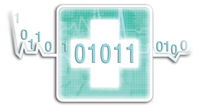
Lead Image © kritiya, 123RF.com
Future-Proof
Welcome
I'm often asked which type of training and certifications I would recommend to someone who either wants to further their current career or who wants to break into information technology as a system administrator. My answer has changed over the years. Originally, I said to expand your knowledge base by getting into Linux because so many people were Windows-only types. Later, I said that you should explore mobile computing (e.g., phones, tablets, and other lightweight computing devices and services) to extend your employable skills and enhance your ability to serve a wider range of users. These days, my answer is that you should learn automation scripting in the forms of PowerShell, Bash, and a programming language such as Python or Ruby. Automation can mean a lot of different things, but for me, automation means scripting repetitive tasks. And most tasks are repetitive enough to be at least partially scripted.
I've written before about automation, but it's so important that I feel compelled to repeat my advice and some recommendations in this area.
Before I cast forth my pearls of wisdom, I want to offer a word of caution to you would-be automation system designers: The easier you make something on the front end, the more complex it's going to be on the back end. If you create a very easy-to-use system, program, or front-end interface, the back-end programming and timing are going to be equally complex. So, if you're into automation scripting and programming, be prepared to stretch your knowledge far beyond your current limits. Making something easy is really hard to do.
Notice that I included timing into the complexity equation? For most things, timing is very important, but for automation, timing is critical because of dependencies. Task A must complete before task B, task C cannot execute unless task B completes with an exit code of , and so on. A lot of automation never happens because of timing fails. You must be a bit
Buy this article as PDF
(incl. VAT)
Buy ADMIN Magazine
Subscribe to our ADMIN Newsletters
Subscribe to our Linux Newsletters
Find Linux and Open Source Jobs
Most Popular
Support Our Work
ADMIN content is made possible with support from readers like you. Please consider contributing when you've found an article to be beneficial.






